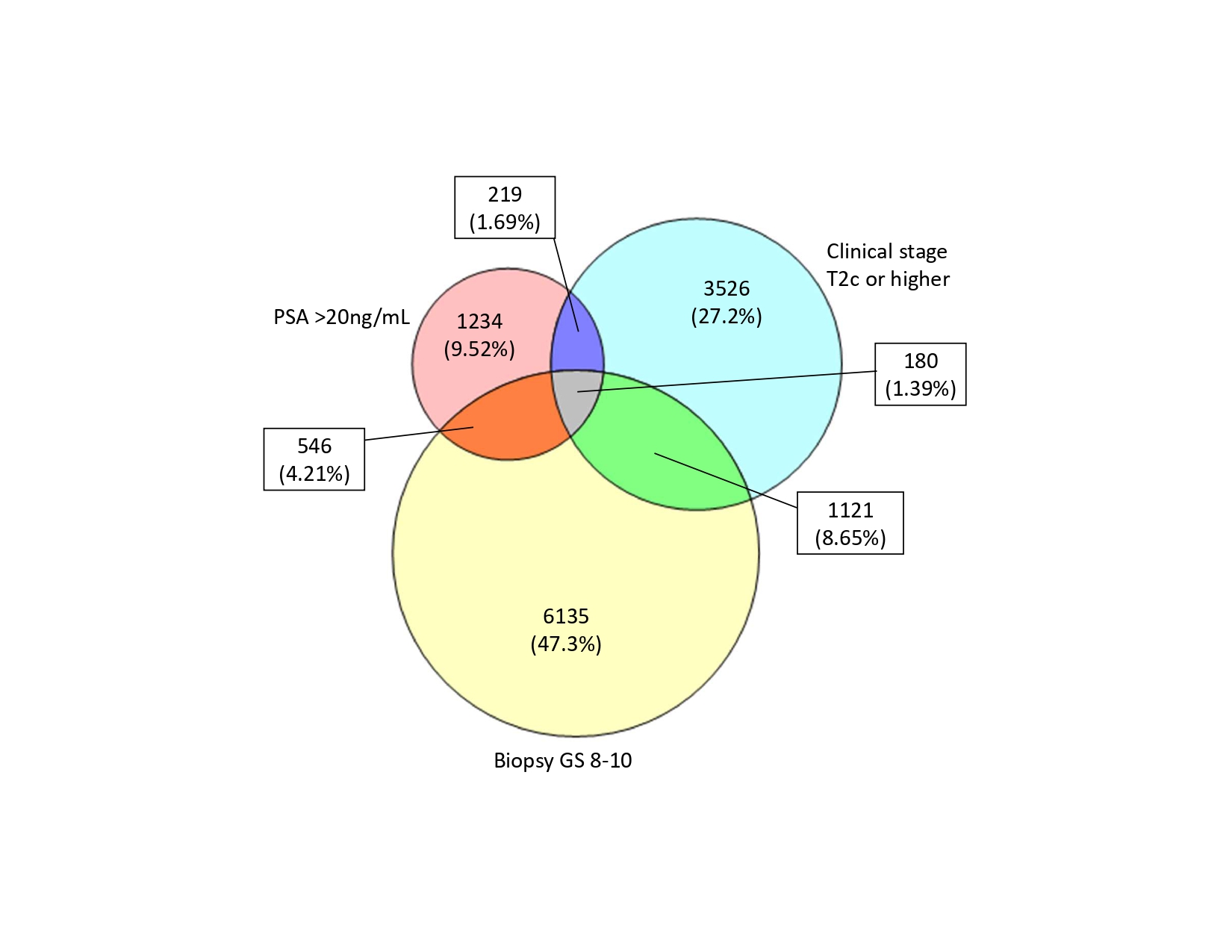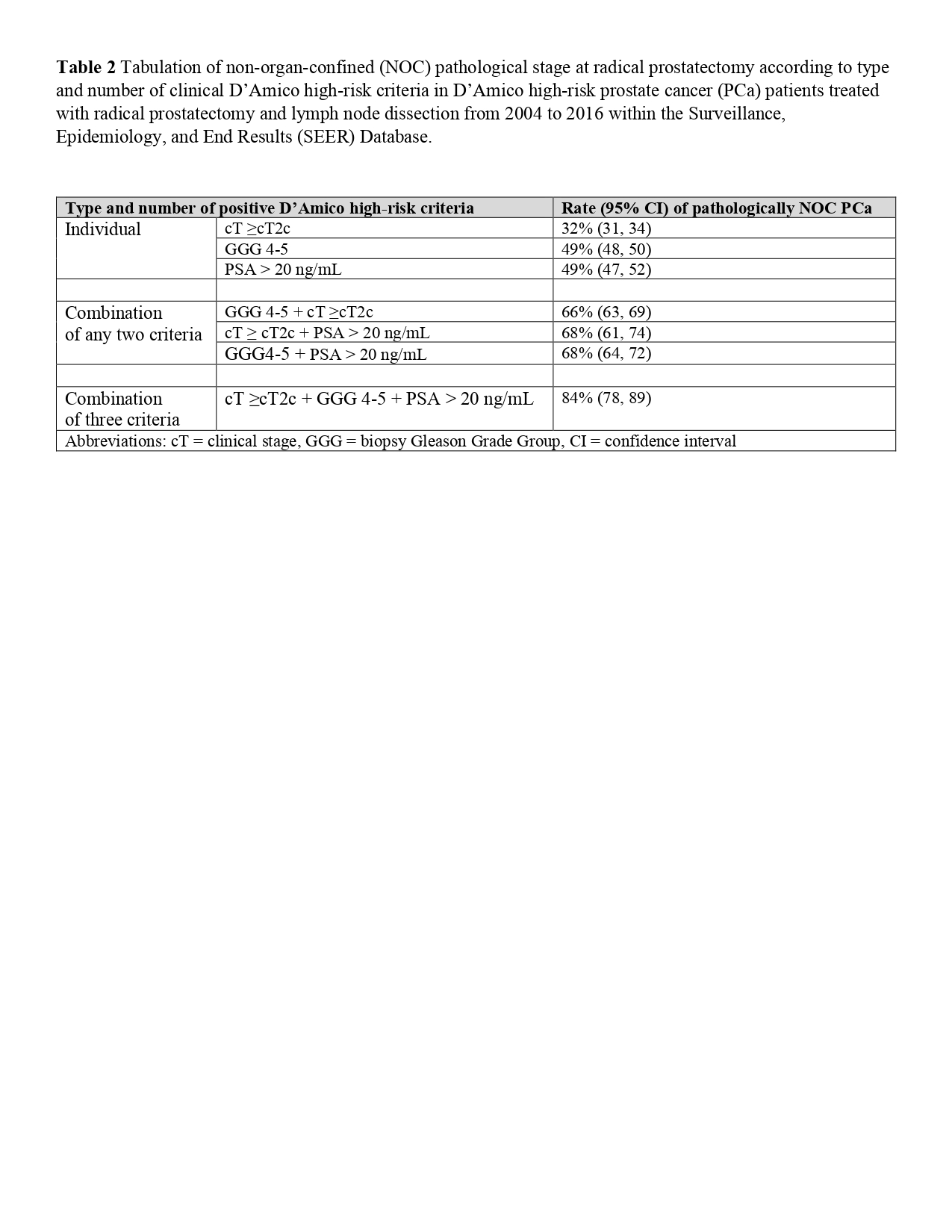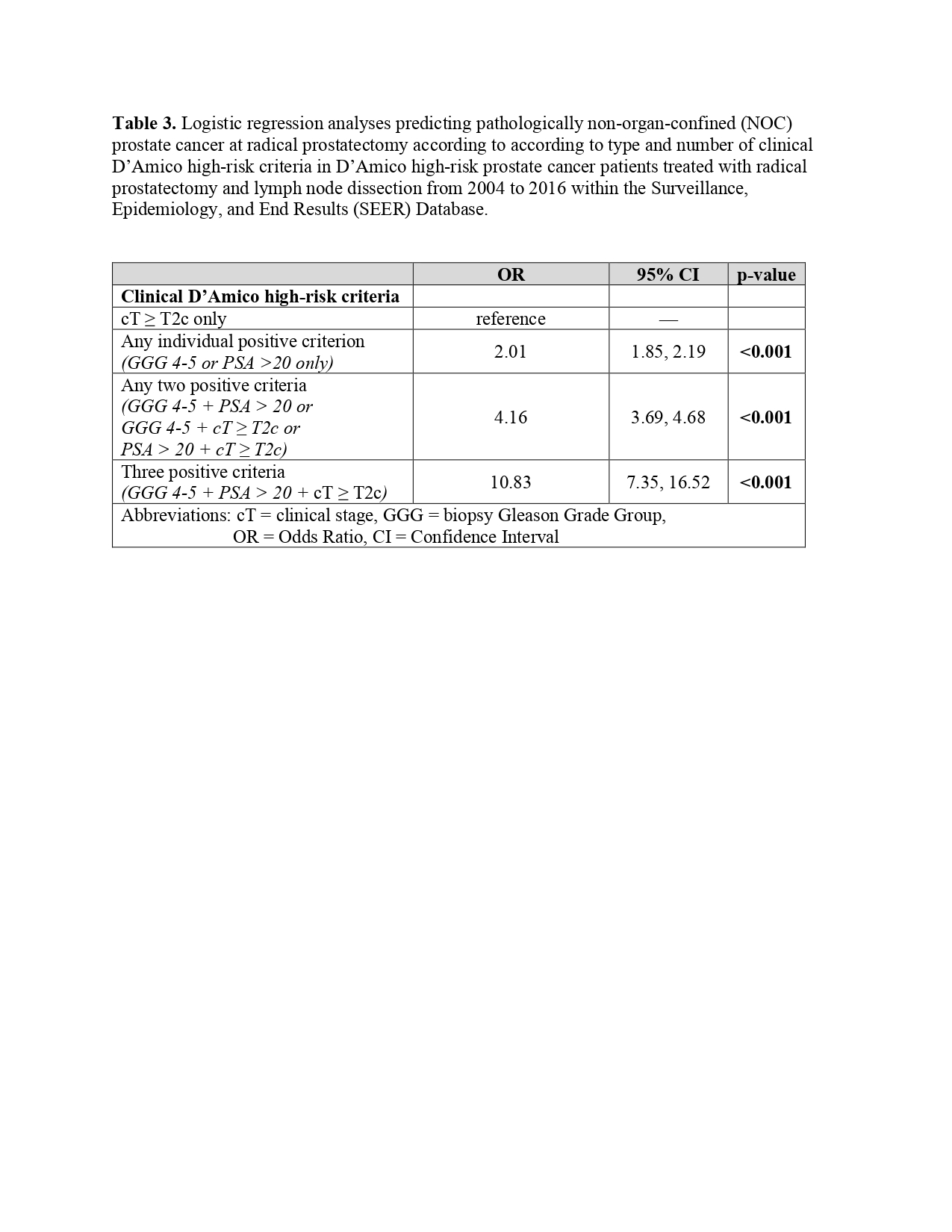Back
Poster, Podium & Video Sessions
Moderated Poster
MP51: Prostate Cancer: Staging
MP51-20: The association of type and number of D'Amico high-risk criteria with rates of pathologically non organ confined prostate cancer
Sunday, May 15, 2022
4:30 PM – 5:45 PM
Location: Room 222
Francesco Chierigo*, Genova, Italy, Rocco Simone Flammia, Rome, Italy, Gabriele Sorce, Milan, Italy, Benedikt Hoeh, Frankfurt, Germany, Lukas Hohenhorst, Hamburg, Germany, Zhe Tian, Fred Saad, Montreal, Canada, Markus Graefen, Hamburg, Germany, Michele Gallucci, Rome, Italy, Alberto Briganti, Francesco Montorsi, Milan, Italy, Felix K.H. Chun, Frankfurt, Germany, Shahrokh F. Shariat, Vienna, Austria, Guglielmo Mantica, Maro Borghesi, Nazareno Suardi, Carlo Terrone, Genova, Italy, Pierre I Karakiewicz, Montreal, Canada

Francesco Chierigo
IRCCS Policlinico San Martino Hospital - University of Genova
Poster Presenter(s)
Introduction: To assess the association between type and number of D’Amico high-risk criteria (DHRCs) with rates of pathologically non-organ confined (NOC) prostate cancer (PCa) in patients treated with radical prostatectomy (RP) and pelvic lymphadenectomy (PLND).
Methods: In the SEER database (2004-2016), we identified 12,961 RP+PLDN patients with at least one DHRC. We relied on descriptive statistics and multivariable logistic regression models.
Results: Of 12,961 patients, 6,135 (47%) exclusively harbored biopsy GS 8-10, 3,526 (27%) had clinical stage = T2c, 1,234 (9.5%) had PSA > 20ng/mL. Only 1,886 (15%) harbored any combination of two DHRCs. Finally, all three DHRCs were present in 180 (1.4%) patients.
NOC rates increased from 32% for clinical T stage = T2c, to 49%, for either GS 8-10 only or PSA>20ng/mL only, to C)66-68% for any combination of two DHRCs, to 84% for respectively all three DHRCs, which resulted in multivariable logistic regression OR of 1.00, vs 2.01 (95% CI 1.85 - 2.19, p<0.001), vs 4.16 (95% CI 3.69- 4.68, p<0.001), vs 10.83 (95% CI 7.35 - 16.52, p<0.001).
Conclusions: Our study indicates a dose-response effect according to the type and number of DHRCs. Specifically, the effect size doubles from the weakest individual DHRC (cT stage = T2c) to stronger individual DHRCs (either GS 8-10 only or PSA>20ng/mL only), it doubles again in presence of any two DHRCs, and finally doubles again in presence of all three DHRCs. In consequence, a formal risk-stratification within high-risk PCa patients should be considered in clinical decision making.
Source of Funding: no funding.



Methods: In the SEER database (2004-2016), we identified 12,961 RP+PLDN patients with at least one DHRC. We relied on descriptive statistics and multivariable logistic regression models.
Results: Of 12,961 patients, 6,135 (47%) exclusively harbored biopsy GS 8-10, 3,526 (27%) had clinical stage = T2c, 1,234 (9.5%) had PSA > 20ng/mL. Only 1,886 (15%) harbored any combination of two DHRCs. Finally, all three DHRCs were present in 180 (1.4%) patients.
NOC rates increased from 32% for clinical T stage = T2c, to 49%, for either GS 8-10 only or PSA>20ng/mL only, to C)66-68% for any combination of two DHRCs, to 84% for respectively all three DHRCs, which resulted in multivariable logistic regression OR of 1.00, vs 2.01 (95% CI 1.85 - 2.19, p<0.001), vs 4.16 (95% CI 3.69- 4.68, p<0.001), vs 10.83 (95% CI 7.35 - 16.52, p<0.001).
Conclusions: Our study indicates a dose-response effect according to the type and number of DHRCs. Specifically, the effect size doubles from the weakest individual DHRC (cT stage = T2c) to stronger individual DHRCs (either GS 8-10 only or PSA>20ng/mL only), it doubles again in presence of any two DHRCs, and finally doubles again in presence of all three DHRCs. In consequence, a formal risk-stratification within high-risk PCa patients should be considered in clinical decision making.
Source of Funding: no funding.




.jpg)
.jpg)